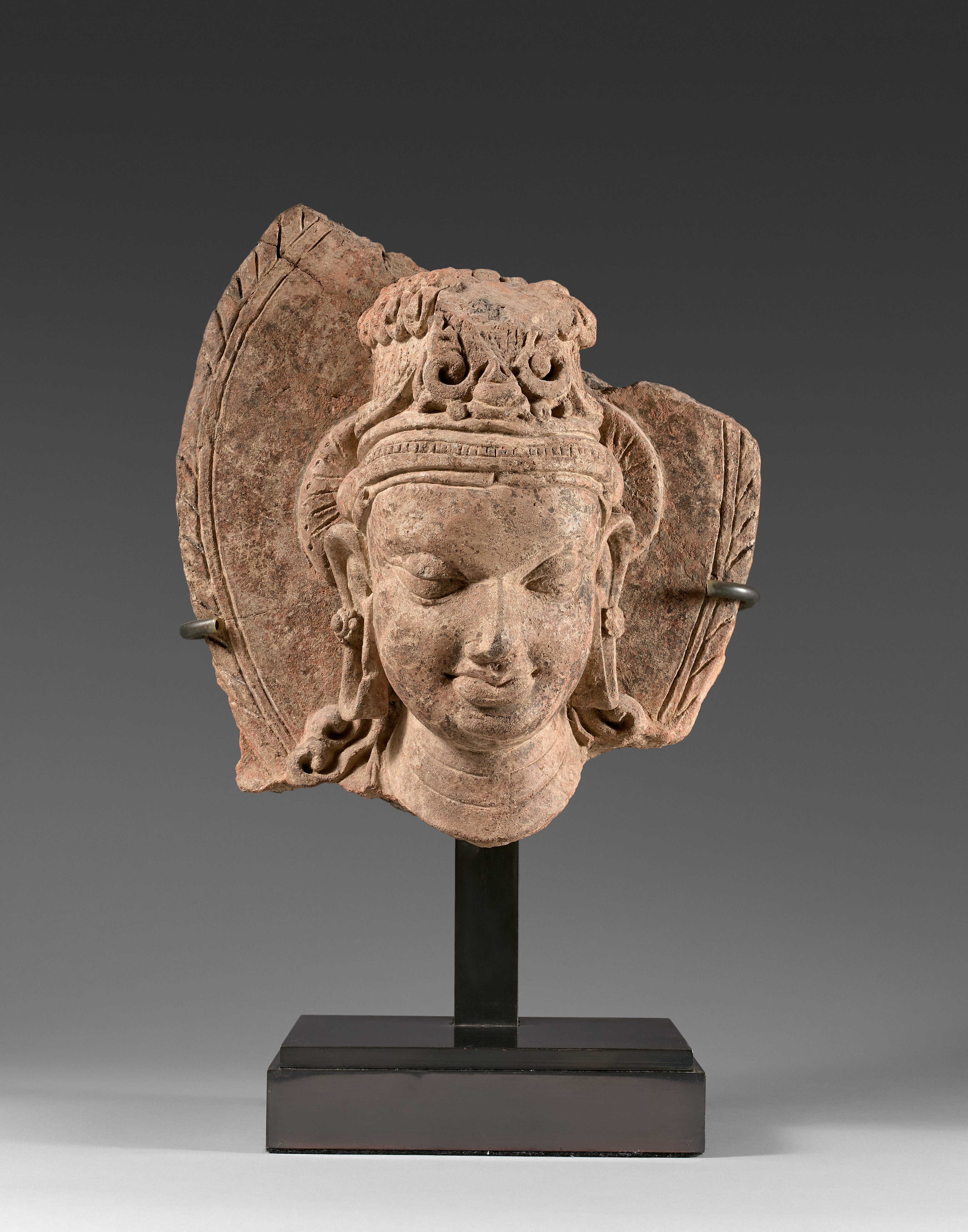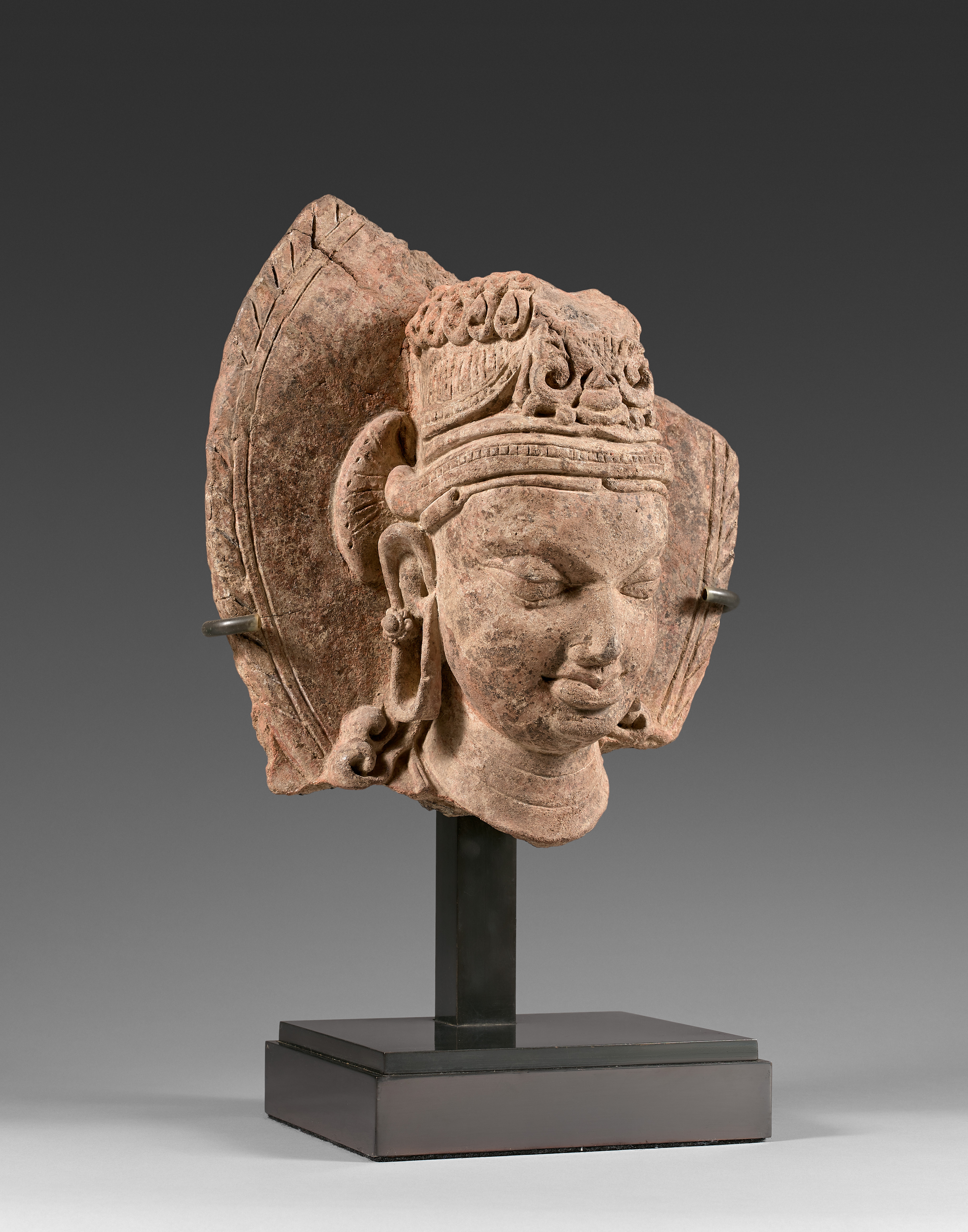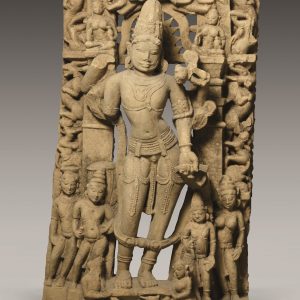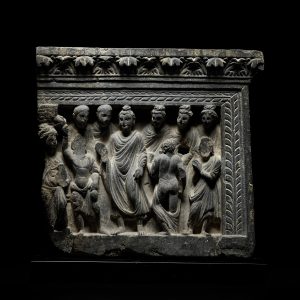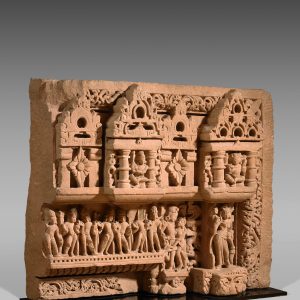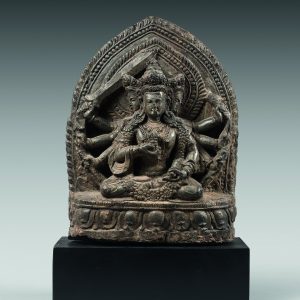Head of Sūrya
Terracotta
Bangladesh
6th-7th centuries, Gupta period
H. 24 cm or 9 ½ in
Description
This majestic head of Sūrya, characteristic of Bangladesh sculptures made during the Gupta period in the 6th-7th centuries and testifying to the exceptional artistic skills of the sculptors who worked with terracotta in this region.
The superb face, the neck with its lines of beauty, most of the elaborate headdress and a large part of the nimbus: all these elements have fortunately been preserved. Particularly noteworthy is the fine work of the richly elaborated tiara. The headdress consists of two fan-shaped lateral elements and a central sophisticated pattern that was once supposed to be pyramidal in shape, with two scroll-shaped motifs standing out in relief. Braided hair curls appear at the top of this tiara, and a few strands fall in soft undulations to the shoulders. Garlands further enhance the crown. Two precious jewels on the ears have beaded ornaments, and a necklace once adorned the divinity.
The nimbus, here elongated in shape, confirms the divine nature of the character. In addition, the headdress with the small puff elements on the side with striations is a distinctive sign of the Sun God, Sūrya. This corresponds to an embroidered textile which was attached at the back. The expression of the god is serene and concentrated. The outlines of his elongated eyes are delicately incised, and the eyelids drop slightly, enhanced by long graphic eyebrows. The cheeks are full, the straight nose is well defined and the fleshy lips with a sensitive modeling sketch a slight smile. The features of this Sūrya show all the refinement achieved during the Gupta period, the golden age of Indian art.
The brown surface suggests the presence of a layer of coating that served as a base for polychrome decoration that once covered the sculpture. This piece comes from a private English collector who bought it from the gallerist Marcel Nies. There are works of comparison, including a head of Sūrya from the Mahāsthān Archaeological Museum (MAH 1553) or a bust in the Metropolitan Museum in New York (2000.82).
Provenance: Private collection , UK, acquired from Marcel Nies.

